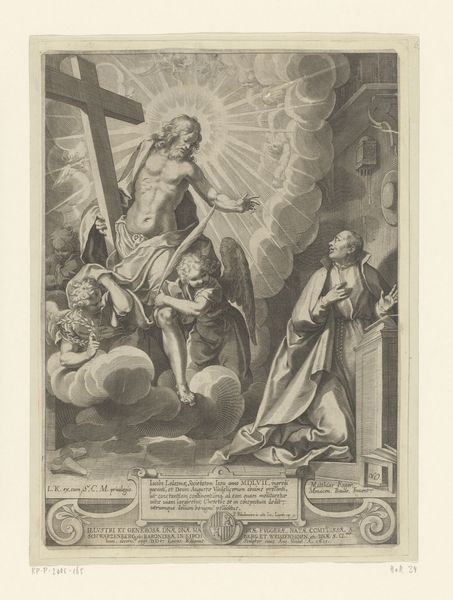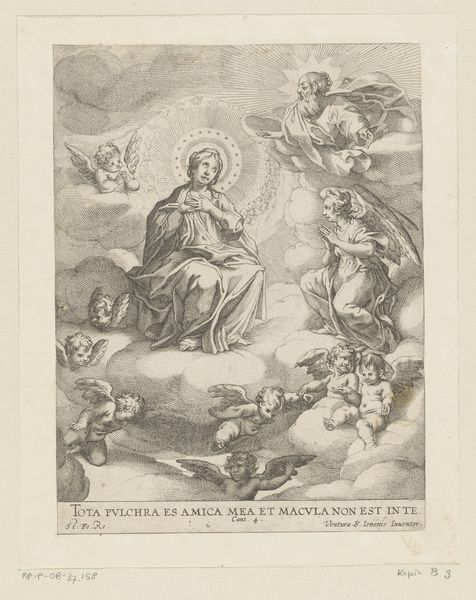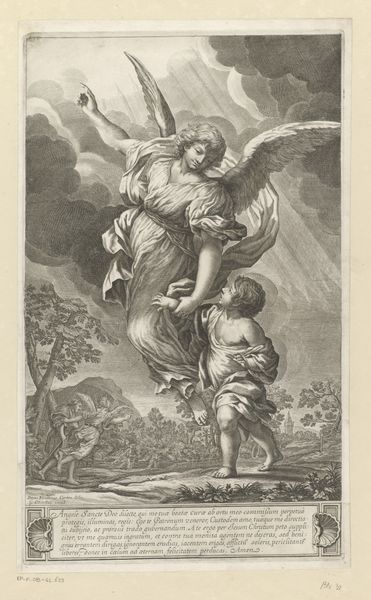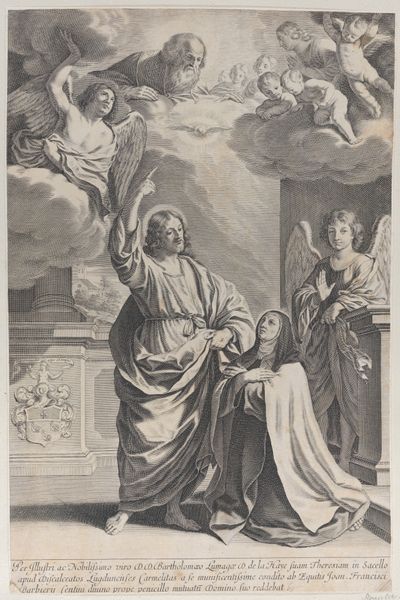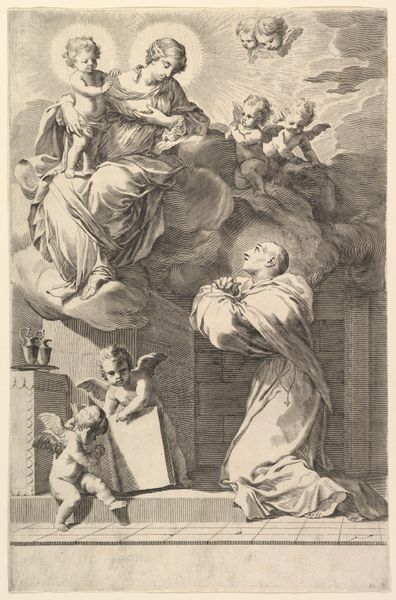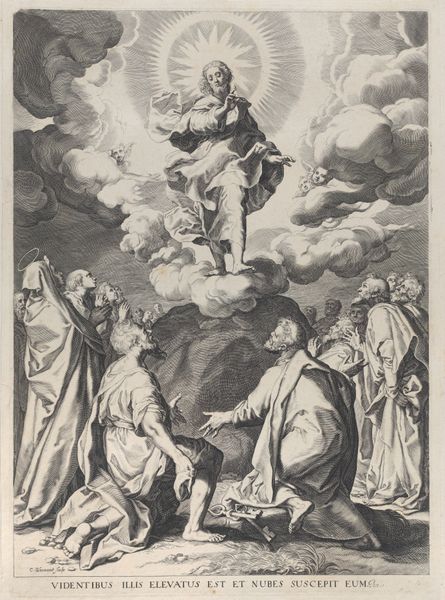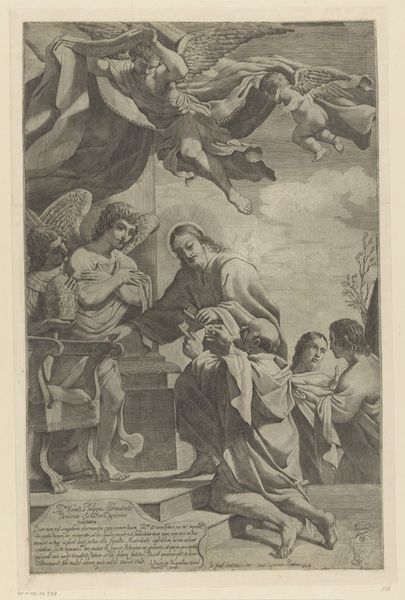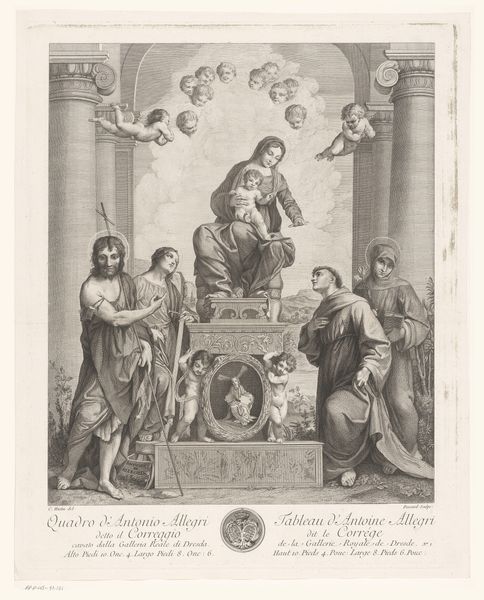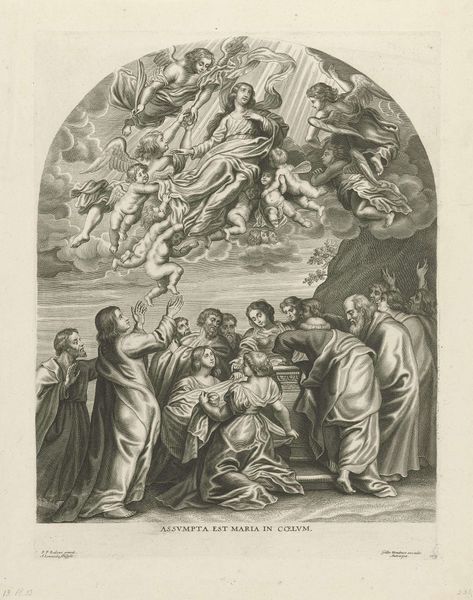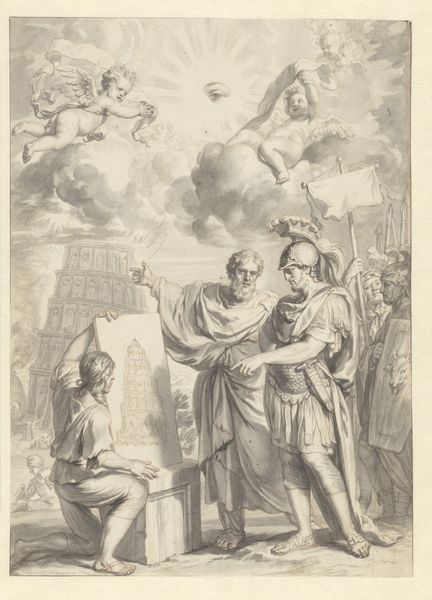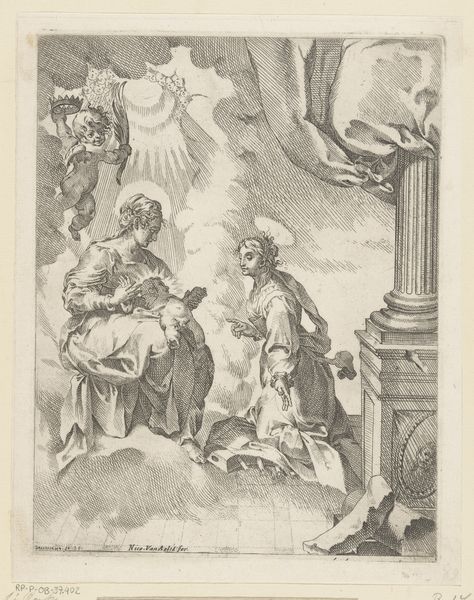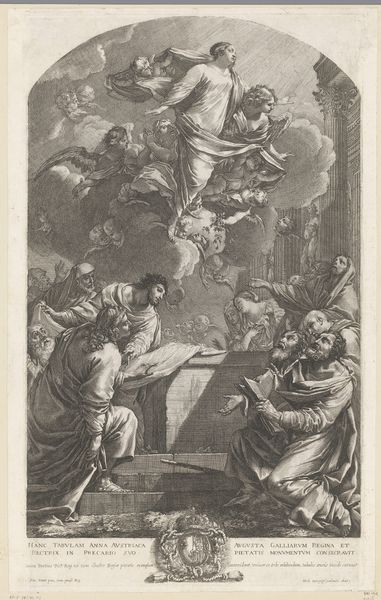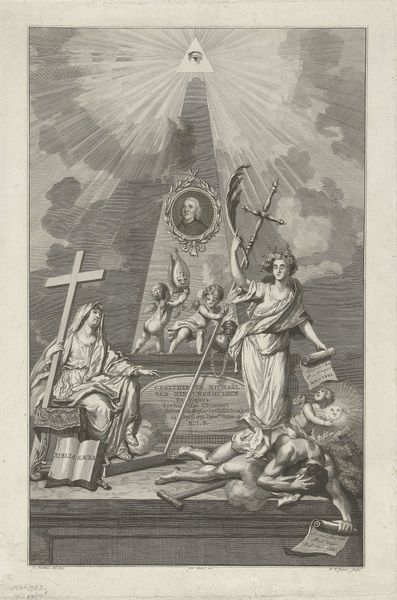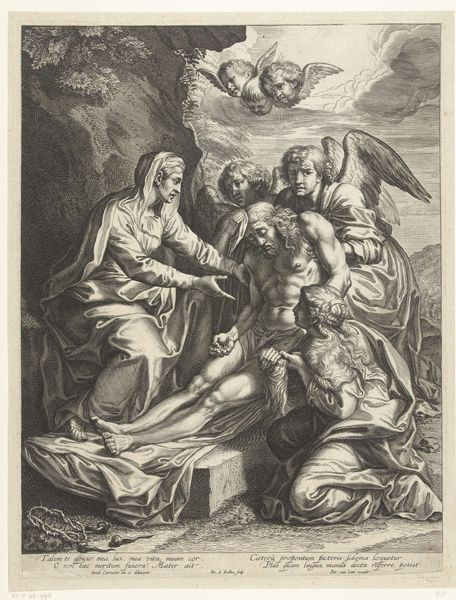
Knielende koning voor Christus op een wolk, tussen hen in het kruis 1632 - 1693
0:00
0:00
print, engraving
#
allegory
#
baroque
# print
#
caricature
#
figuration
#
history-painting
#
engraving
Dimensions: height 444 mm, width 384 mm
Copyright: Rijks Museum: Open Domain
Curator: This engraving, currently held at the Rijksmuseum, is entitled "Kneeling King Before Christ on a Cloud, the Cross Between Them" by Francois de Poilly, and it was produced sometime between 1632 and 1693. Editor: It's stark. The contrast immediately pulls you in. You can practically feel the texture of the clouds and the weight of the cross through the lines. Curator: De Poilly’s skillful use of engraving truly elevates the medium to create a compelling commentary on power, subservience, and the societal implications of faith during the Baroque period. Editor: The way the king is depicted kneeling before Christ... It is fascinating to think about the power dynamics at play when the supposedly most powerful man is literally on his knees. What was happening in Europe at this time to cause this expression? Curator: That's key. Context is crucial. The artwork presents an idealized vision of kingship intertwined with religious piety. We need to look at European history from the perspective of its monarchies and the evolving relationships between church and state at that time. Think of Louis XIII dedicating France to the Virgin Mary. De Poilly taps into the anxiety of rule. Editor: But who was this image for? The level of detail—look at the individual soldiers marching in the background, the precise engraving used to show textures in fabric—indicates a high level of labor involved. It must have been intended for an elite consumer with an appreciation for both religious allegory and the value of skilled craftsmanship. Curator: I think you're right, and I suspect it also served as a potent propaganda piece, reinforcing the divine right of kings and underscoring the perceived moral authority of the monarchy through religion. The distribution channels are as important as the content. Editor: I agree completely. You can almost trace the labor, the paper, the ink... even the societal structures implicit in the artmaking process from those delicate lines. Curator: Exactly. Bringing together historical and cultural perspectives, seeing artwork not just as aesthetic objects but as reflections of intertwined identities and power is the key to this work’s legacy. Editor: This piece really highlights how focusing on production and viewership provides a unique lens to examine the cultural significance and power structures embedded within it. Curator: Yes, a deeper, much richer context emerges, enabling a powerful commentary between the viewer and its socio-historic origins. Editor: Absolutely, and a continued examination into art as material history.
Comments
No comments
Be the first to comment and join the conversation on the ultimate creative platform.
